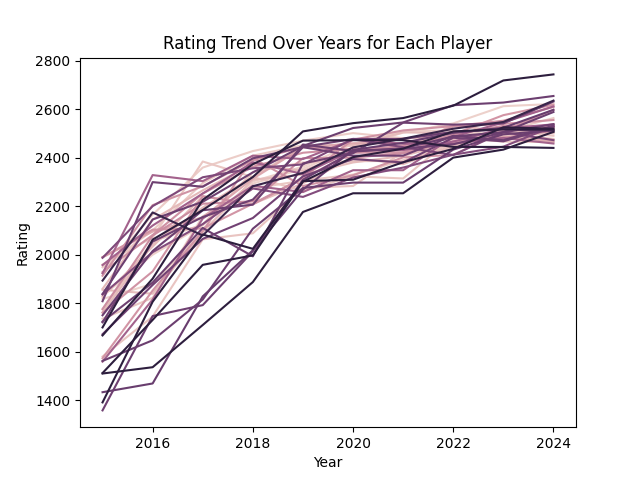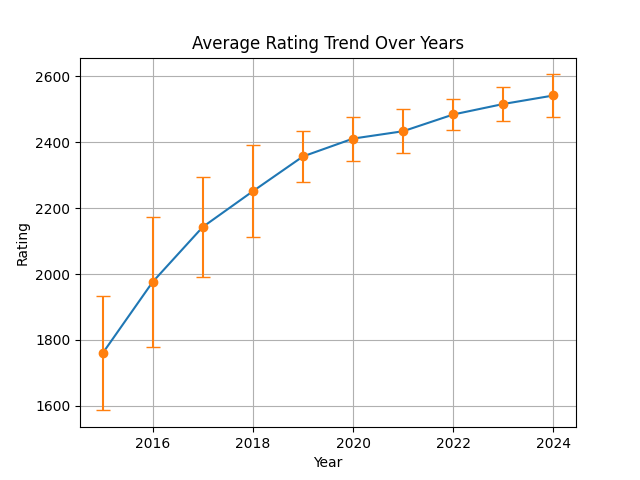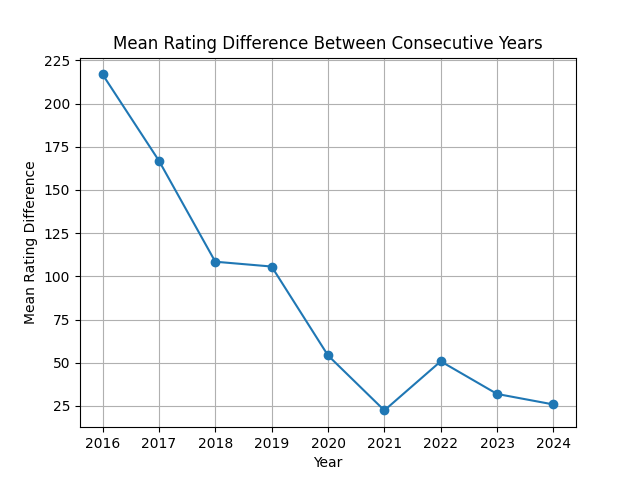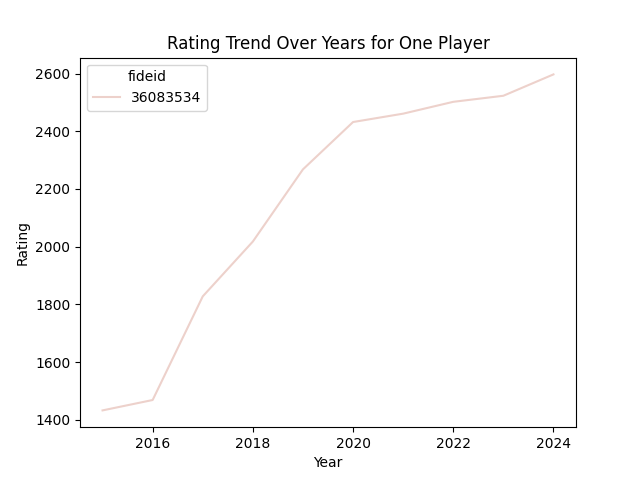Becoming an expert: How long does it take?
How fast can a chess player reach Grandmaster title? What is the average pace in gaining elo rating?
How long does it take to become a chess expert? Simon and colleagues (Simon & Chase, 1973; Simon & Gilmartin, 1973) proposed a ‘10-year rule’ for the development of chess expertise based on theoretical arguments about information processing efficiency and computer simulations of pattern recognition in chess. Accordingly, a chess player needs about a decade of study to acquire the necessary knowledge base to perform at very high levels of tournament play (Charness et al, 2005).
Following subsequent investigations across various populations, from elite musicians to marathon runners, significant empirical evidence emerged to support extending the application of the ten-year rule to other skill domains (Ericsson, Krampe, & Tesch-Römer, 1993).
If we take an assumption that at least 10 years is necessary for a chess player to enter the realm of Grandmasters, what does the function look like? Do chess players progress linearly throughout the years? Can we define a common trajectory? How does it help us understand expertise development?
Analyzing data spanning from 2015 to 2024, I tracked the progress of chess players and their standard ratings in chess using data found on FIDE website. My focus honed in on individuals who began with ratings below 2000 in 2015 and rose to the esteemed rank of Grandmaster by 2024. Through this thorough examination, I aimed to unveil the trajectory and pace of advancement towards expertise in chess. By filtering out those with lower initial ratings, I aimed to discern patterns and insights into the journey of becoming a Grandmaster within this timeframe. I used data available at Fide
From a total of 3284637 chess players, only 39 players began with ratings below 2000 in 2015 and rose to the esteemed rank of Grandmaster by 2024. Only those players are taken into further analysis.
The following graph presents 39 chess players’ rating progression over 10 years period.

This observation suggests that the function follows a logarithmic pattern, characterized by rapid growth in Elo rating initially, followed by a stabilization phase once a certain threshold is reached. In this specific instance, the Elo rating exhibits accelerated progression initially and then levels off after approximately reaching 2400.
Typical progression onset when the previous variability in function is averaged throughout every year, the following pattern emerges:

The typical rating in the first year would be 1780, with a significant variance, and it would progress each year for a certain amount to 2550 last year (after 10 years), but the variance is progressively much smaller.
How much the rating increases over the years depends on the differences between consecutive years’ progress, which forms a shame of negative potential function:

In the first couple of years, the difference in Elo rating is much bigger concerning the later years of chess playing.
This insight could be attributed to several factors:
Diminishing Returns: As a player improves in skill, it becomes increasingly challenging to make significant gains in Elo rating. Initially, when a player is less skilled, there may be relatively easy improvements to make, resulting in rapid Elo growth. However, as the player becomes more proficient, the rate of improvement slows down due to the diminishing returns of additional practice and learning.
Increased Difficulty: Advancing beyond a certain elo threshold typically requires a higher level of skill and expertise. As players reach higher Elo ratings, they face tougher competition, making it more difficult to achieve further gains. This increased difficulty contributes to the stabilization of Elo ratings once a certain level is reached.
Plateau Effect: In many skill-based activities, individuals may experience plateaus in their progress, where they reach a temporary ceiling in performance despite continued effort. This plateau effect can lead to the observed stabilization of Elo ratings as players encounter challenges in further improving their skills.
Skill Saturation: After attaining a certain level of proficiency, players may reach a point where they have acquired most of the fundamental skills and strategies necessary for the game. At this stage, additional improvements may be more incremental, resulting in the levelling off of Elo ratings.
According to chess expertise theory, expertise is defined at least as 10 years of development and additionally, the analysis shows converging results. The stable Elo rating progression started to emerge 10 years after being a nearly average player.
Nevertheless, a conducted meta-analysis (Macnamara, Hambrick and Oswald, 2014) revealed that deliberate practice accounted for 26% of the variance in-game performance, 21% in music, 18% in sports, 4% in education, and less than 1% in professions. Other factors can influence the development, differences in problem-solving abilities and intelligence can play a major part if someone reaches the point of expertise quite early. Especially if one reaches the same point with less experience in general.

This player 2022 achieved the Grandmaster title, in only 8 years, with almost a 1200 elo rating difference. One in many, but for sure an example of human abilities.
Charness, N., Tuffiash, M., Krampe, R., Reingold, E., & Vasyukova, E. (2005). The Role of Deliberate Practice in Chess Expertise. Applied Cognitive Psychology, 19(2), 151–165. https://doi.org/10.1002/acp.1106
Ericsson, K. A., Krampe, R. Th., & Tesch-Ro¨mer, C. (1993). The role of deliberate practice in the acquisition of expert performance. Psychological Review, 100, 363–406.
Macnamara, B. N., Hambrick, D. Z., & Oswald, F. L. (2014). Deliberate Practice and Performance in Music, Games, Sports, Education, and Professions: A Meta-Analysis. Psychological Science, 25(8), 1608–1618. doi:10.1177/0956797614535810
How fast can a chess player reach Grandmaster title? What is the average pace in gaining elo rating?
Foo Bar design system including logo mark, website design, and branding applications.